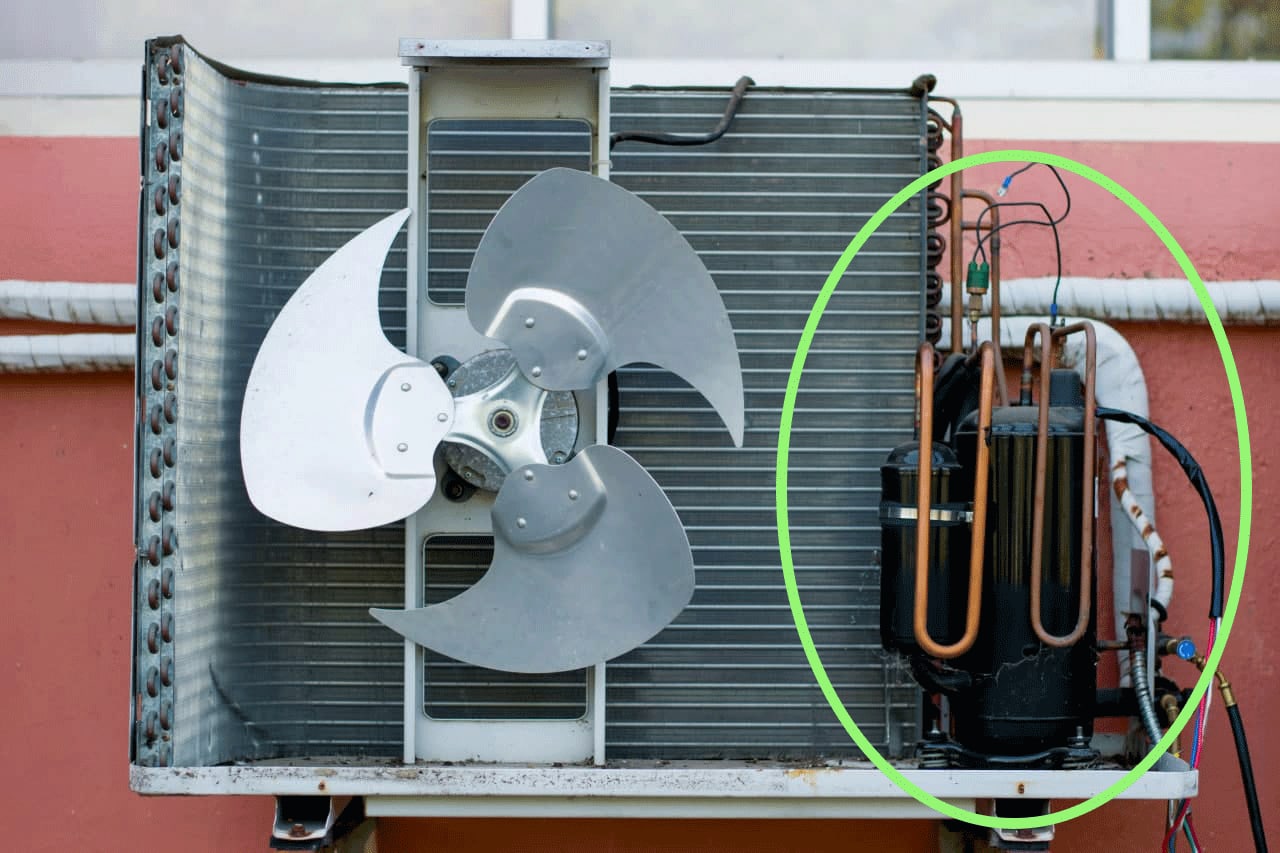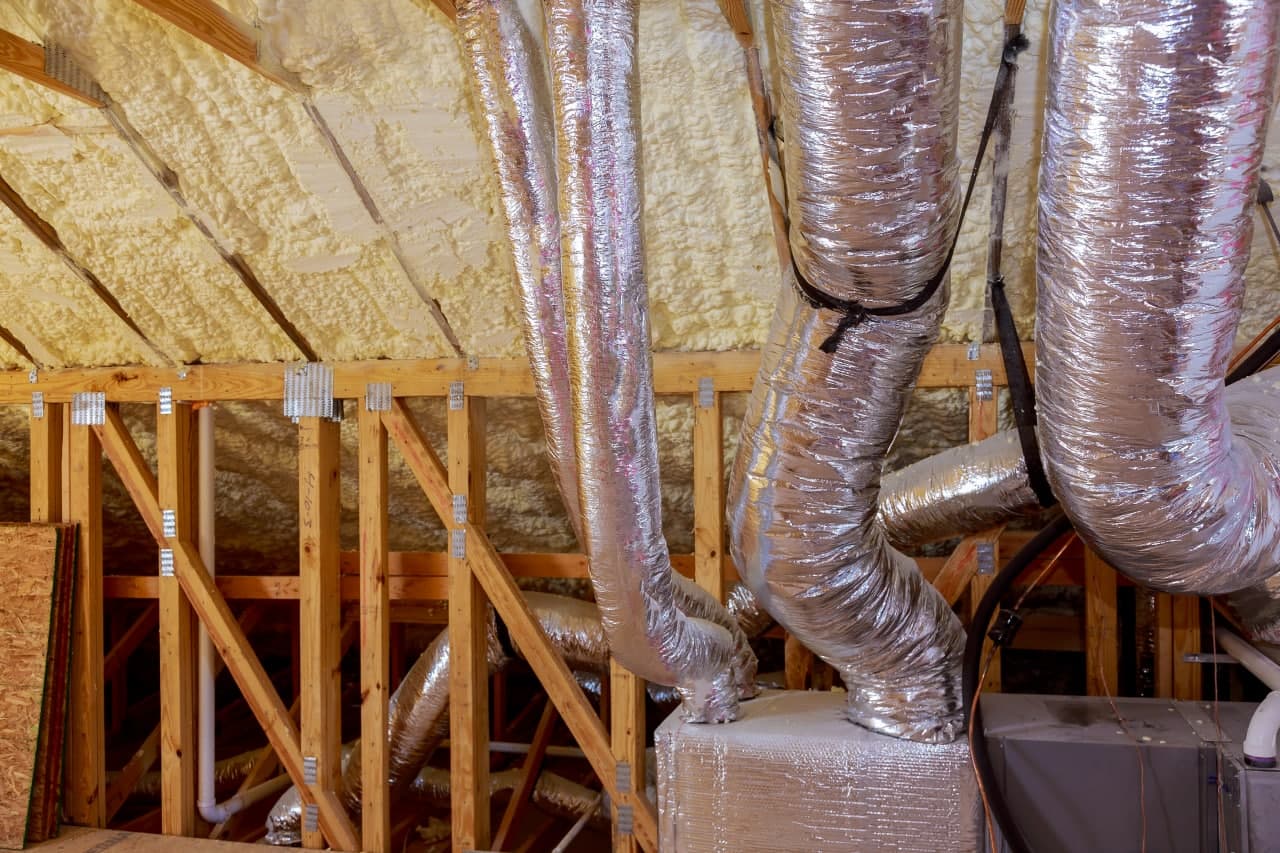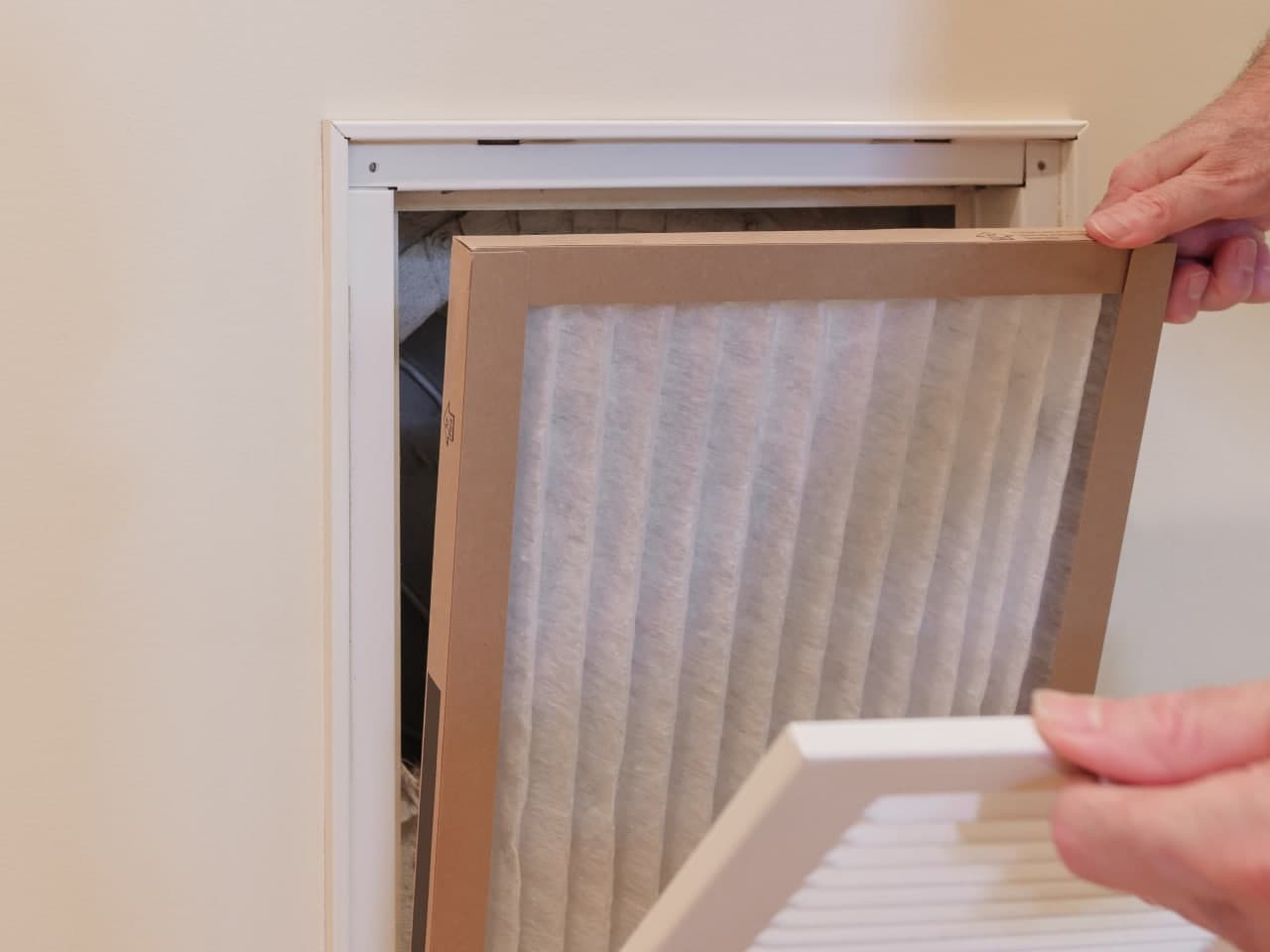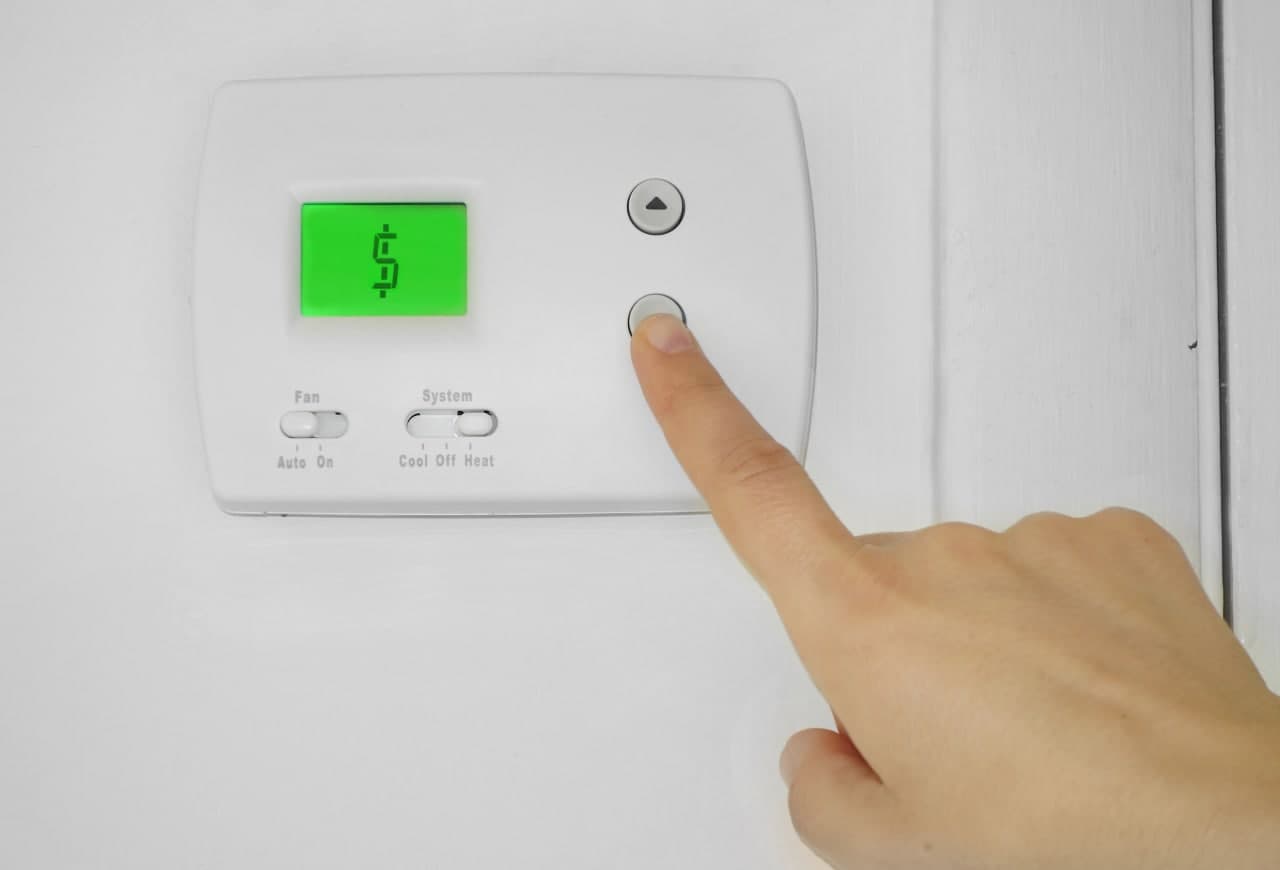Congratulations! You just bought a new home to call your own. But that also means you now are responsible for maintaining the house. When you’re a homeowner, there’s no landlord or property manager to come by and fix things when they aren’t working right – it’s all on you.
Most homeowners quickly find an ounce of prevention is worth way more than a pound of a cure when it comes to their central air unit.
It’s one of the most complex and crucial systems in your home and you have to play an active role in maintenance if you want it to run as efficiently and as long as possible.
The only way to properly maintain your central air conditioner is to understand the basics of how it works.
This guide is designed to be an introduction for homeowner. We hope you’ll learn:
- What a central air unit is
- The different parts of your central air system
- How the different parts work together
- How to properly care for the entire system.
What is Central Air Conditioning?
Central air conditioning refers to a whole-house cooling system that controls the temperature of the air inside, and cycles refrigerated air throughout the home by way of ductwork and ventilation.
It’s best described as a “closed loop system,” meaning that the air isn’t cycling in and out of the house. There are a variety of air conditioning systems designed to achieve the end goal of temperature control – most of them work this way.
A central air conditioning system works by drawing heat out of the air inside your house and transferring it to the outside. Contrary to popular belief, AC units don’t condition warm air by mixing in cool air – they work by removing warm air from the mixture.
As soon as heat is drawn out of the air it is cooled using refrigerant. Fans then push the air through ducts that distribute the cooled air throughout the home.
Forced Air vs Central Air System
We often get asked about the difference between central air and “forced air” systems. The truth is there isn't much of a distinction between the two terms. Forced air simply means that the system used ductwork and vents. Therefore, a central air conditioning system can also be described as a forced air system.
However, some people do refer to the heating system as the forced air system and the cooling system as central air conditioning.
All the Components of Your Central Air Unit
Hundreds of pieces and parts go into a typical central air conditioning system. You don’t need to know every single part, but it’s good to know the core components of a central air unit. They include:

Evaporator Coils - The evaporator unit contains the cooling coils. The evaporator coils are able to remove heat (and humidity) from the air using refrigerant. Dust will buildup and cause your coil to "ice over" if you run the AC without a filter or with the wrong size filter.
Blower - The blower, also called the fan, draws air in over the evaporator coils to be cooled. The blower then pushes the cooled air into and through the ductwork.


Condenser Coils - The heat absorbed by the evaporator coil travels to the "outdoor unit", also known as the outdoor condenser, and finally dispelled.
Compressor - The compressor is a pump that moves refrigerant from the evaporator to the condenser so that the air can be cooled. There’s also a fan on top of the compressor that helps release the collected heat outside.


Ductwork - This is a system of tubing that is connected to the air handler and runs throughout the home distributing conditioned air through registers that open into rooms. There is a central duct with branch offs into smaller ducts.
Thermostat - This is a device on a wall in the home that is connected to the AC system and allows you to control the air temperature, set schedules or turn the system on and off completely.


Air Filter - The air filter is an external component that is put into a compartment of the air handler or intake vent to capture air particles and contaminants so that they don’t get into the internal components of the air conditioning system.Most central air systems have 2 filter locations.
Choosing the Best Central Air Conditioner for Your Home

By now you may be wondering if your central air conditioner is properly equipped for your home.
Many homeowners are surprised to find that their home’s current AC system is inefficient and may not even provide adequate temperature control. This could be an issue of the current unit being outdated and needing replacement, or it could be a matter of the wrong system being selected in the first place.
If you find yourself in the position where you need to install a new system, it’s important to evaluate which one will be the best central air conditioner for your needs.
Let’s take a quick look at the top considerations when you’re choosing a central air conditioning system.
What Size Central Air Unit Do You Need?
The first question you’ll want to answer is, what size central air conditioner do I need?
There is no “one size fits all” answer to this question, but it will always have a huge impact on performance, comfort, and cost.

You’ll want the system to be big enough to properly condition the home so that it’s comfortable but going too large can be a waste of money and ultimately ends up being less efficient.
So how do you know what size unit is right for your home?
The rule of thumb is to calculate the number of BTUs that are needed for cooling. You can get a rough estimate using square feet alone.
For example, for a 1,000 square foot house you’ll need at least 18,000 BTUs.
By making sure you have an adequately sized central air unit, you can rest assured that you won’t be spending money in the near future for a replacement.
How Much Should I Pay for a Central Air Unit?
The price of the central air unit is going to be a major factor for most homeowners.
A central air conditioning system is a big investment that will cost at least $3,000 for equipment and installation, but it can be as much as $12,000 for a residential home installation, which may include running ductwork, electrical work, and more.
Before you start comparing systems, you need to have an idea of your budget.

There is good news: If you choose a high-efficiency model, you can save 20-50% on your air conditioning costs over time. Plus, there are tax credits that help to lower the cost of Energy Star central air conditioners.
When you’re considering the cost of central air, keep maintenance costs in mind.
You’ll need to clean or replace the air filter regularly, so a system that provides easy access to the air handler where the air filter is located is ideal.
It’s also a good idea to plan on having the central air conditioning system professionally serviced once a year. This can help you avoid major repairs that are much, much more expensive.
Routine maintenance may seem like an added or unnecessary expense, but it can actually save you money over time in the form of lower utility payments and not having to pay for expensive repairs.
The U.S. Department of Energy estimates that regularly changing your air filter will reduce energy use by 5-15%. It’s noted as the easiest way to save energy and money on air conditioning.
READ MORE: Step-by-Step Instructions for Replacing Your Air Filter
Reliability and Longevity
Another cost factor is how long you can expect the system to remain in place and whether you’ll have to make costly repairs to keep it running.
It’s always a safer bet to go with an air conditioner manufacturer that has a track record of reliability. There are three things you can do to gauge an air conditioner unit’s reliability and longevity:
- Read reviews from actual customers
- Check the manufacturer’s warranty.
- Look into the performance of past products
Here’s an example of how air conditioners can compare:
A Trane air conditioning system may cost more upfront, but they are known to be very efficient and reliable. Or you could select an Amana system that costs less to install, but the warranties only offer coverage for 5-10 years as opposed to up to 20 years for Trane units.
Ultimately, a lot goes into selecting the best central air conditioner for your home.
No matter what system you have, you can always find the air filters you need at Filterbuy. We carry a huge selection of air filters in dozens of dimensions. But if you can’t find what you need, our custom-sized air filters are sure to be the right fit!

.webp)
.webp)
.webp)
.webp)




 Shop MERV 8 Air Filters
Shop MERV 8 Air Filters  Shop MERV 11 Air Filters
Shop MERV 11 Air Filters  Shop MERV 13 Air Filters
Shop MERV 13 Air Filters 


